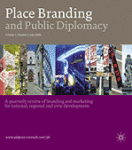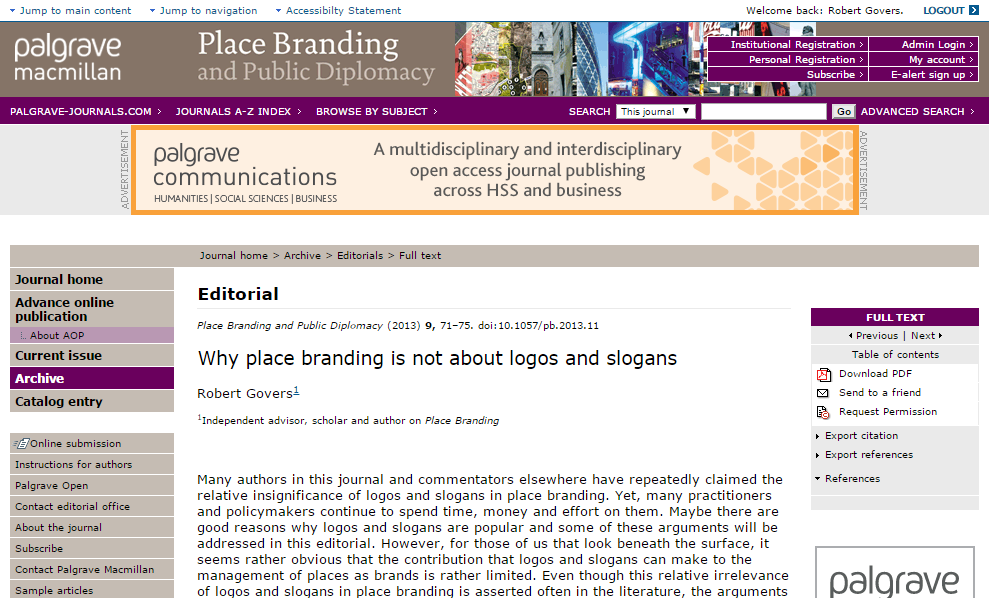 In the current edition of the Place Branding and Public Diplomacy journal, co-editor Robert Govers shared some interesting insights into which articles have been the most visited during the journal’s 10 years of existence.
In the current edition of the Place Branding and Public Diplomacy journal, co-editor Robert Govers shared some interesting insights into which articles have been the most visited during the journal’s 10 years of existence.
Here’s a taster of the three articles with most hits. If you haven’t subscribed to the journal yet, we highly recommend it as a great way to stay up to date on place branding and public diplomacy research insights.
Dos Santos and Campo (2014) on the destination branding of Cape Verde
This case study on the destination branding of Cape Verde is intriguing, not just because of the growing importance of tourism for Cape Verde (between 2000–2012 tourism grew at an average 17.5 per cent annually), but also because it offers insight into the branding process: the challenges and opportunities, and the strengths and weaknesses of Brand Cape Verde.
Link to full article (limited access)
Sebastian Zenker (2014) on how to measure place brand equity
Places invest an extensive amount of taxpayers’ money into their branding activities. Consequently, there is an urgent need for a proper success measurement that can capture whether or not taxpayer money is being efficiently and effectively used to create place brand equity.
Unfortunately, place brand equity (in general) and place brand image changes (in particular) are not easy to evaluate and even harder to quantify. This article introduces the Brand Concept Map (aBCM) as useful method to measure place brand equity: both regarding changes in image perception, and as a way to quantify the favourability of the brand image.
Link to full article (limited access)
Nuttavuthisit (2007) on Thailand’s attempt to create a destination image beyond sex tourism
This one is interesting. As Robert Govers puts it in his editorial, “it seems that in place branding and public diplomacy, as in so much in life, sex sells.”
The Branding Thailand project was initiated by the Thai Government to find out how people worldwide view the nation’s strengths and weaknesses. One of the most important issues placing Thailand at a significant disadvantage is the image of sex tourism.
This paper illustrates the current situation and analyses the root causes of sex exploitation and perceptual problems. Place branding strategies are proposed to correct the present negative image by placing emphasis on positive characteristics in order to suppress negative perceptions.
These strategies include the development of brand positioning through promotional campaigns that use positive features, such as natural beauty and local hospitality, and communication tools such as slogans, themes, visual symbols and events.
Link to full article (free access)
Read the editorial by Robert Govers on 10 years of Place Branding and Public Diplomacy Journal.


